Posts Tagged ‘Coin collection’
Victoria, Queen of Coins
Alexandrina Victoria was born on 24th May 1819. At just 18 years old she acceded to the throne and ruled Britain for 63 years, making her Britain’s longest reigning monarch at the time of her death in 1901.
Victoria oversaw the extensive growth and expansion of the British Empire under her rule, with dramatic changes in British culture, industry, and technology. These changes had a significant influence on the development and spread of British coinage.
Victorian currency was minted throughout the world in countries such as India and Australia, as well as Britain. Every coin and portrait tells a unique story – from the ‘Young Head’ which depicted a promising Queen, right through to the ‘Old Head’ which represented an ageing but graceful monarch.
In this blog, we’ll explore the defining coins of Queen Victoria’s reign, as well as taking a look at the modern commemorative coins we see today, issued to celebrate one of Britain’s most influential monarchs.
The defining coins of Queen Victoria’s Reign
1838 Sovereign

The first Sovereign of Queen Victoria’s rule was issued in 1838 with the popular Young Head portrait by William Wyon. The portrait had a particularly youthful look, one that was favoured by Victoria and contributed to the coin’s popularity throughout her reign. To this day, it is the longest a portrait has featured on our circulating coinage, having been issued on bronze coins up until 1895. The Young Head effigy is considered the most favoured portrait of Victoria’s coinage, undergoing only minor changes throughout its lifespan.
Godless Florin

As part of the move towards decimalisation, a coin valued at 1/10th of a pound, the Florin, was introduced in 1849. It featured the Gothic Head portrait by William Wyon which would actually go on to be regarded as one of the most beautiful representations of the Victorian age. However, this coin failed to include the term ‘Dei Gratia’, which earned it the nickname of the Godless Florin. It was swiftly withdrawn from circulation after three years.
Gothic Florin

The Gothic Florin was introduced as a replacement to the Godless Florin and contained a very similar design, but this coin included the term ‘Dei Gratia’. This particular portrait represents the revival of Gothic culture across Victorian life and draws its name from the distinct gothic font used for the inscription around the edge, and the intricate detail on the crown that Victoria wears, which is considered a numismatic masterpiece. As the second Florin to promote decimalisation, the Gothic Florin again failed to gain popularity but was minted for longer than its predecessor.
Click here to own a genuine Queen Victoria Silver Florin
1855 Sydney Sovereign

As part of British imperial expansion, the Royal Mint opened a branch in Sydney and the first Sovereign was minted there in 1855. It had the word ‘Australia’ printed on the reverse and bore a small ‘S’ mintmark to distinguish it as having been minted in Australia. This portrait was only ever seen on Australian coins, produced exclusively at the Sydney Mint for just 14 years. It depicted a younger queen with a sprig of banksia (an Australia plant) weaved into her hair, which gave it a distinct Australian feel.
Double Florin

The Double Florin, in another move towards decimalisation, was valued at 1/5th of a pound and pictured the Jubilee Head. The coin was only 2mm smaller than the Crown but valued at a Shilling less, making it difficult to distinguish between the two. Issued between 1887 and 1890, it is one of the shortest circulating coins in British history. The coin was famously nicknamed the ‘Barmaid’s Ruin’, as tavern maids mistook the coin for a Crown, causing the tavern to lose money and the maid to lose their job!
1901 Sovereign

The final Sovereign of Queen Victoria’s rule depicted the Old Head portrait by Thomas Brock, showing an elegant Queen in her mourning attire. Victoria’s veil had become integral to her image since the death of her husband in 1861, right up until her final years. This is one of the most famous images of Victoria and features on the final sovereign of her reign, issued in 1901 at the end of the Victorian era and the start of a new century.
Modern commemorative coins
Almost 150 years after the birth of Queen Victoria and 120 years after the initial move towards decimalisation, the first decimal coins entered circulation in Britain. The 5p and 10p coins were released in 1968, followed by the 50p coin in 1969.
From the modern coinage we see today, two commemorative £5 coins have been issued in Queen Victoria’s honour.
Death of Queen Victoria 100th anniversary

The death of Queen Victoria in January 1901 marked the end of an era which has left its mark on the modern world. Her reign was remarkable for the extraordinary progress in industry, technology, arts and sciences and the expansion of the British Empire. This coin was issued to mark 100 years since her death and the end of the Victorian era. The reverse by Mary Milner-Dickens reproduces the profile of Victoria by William Wyon against the background of the Crystal Palace exhibition of 1851.
Birth of Queen Victoria 200th anniversary

Under Queen Victoria’s reign, The British Empire became a superpower during an era of peace and prosperity. Designed by John Bergdahl, the reverse of this coin, issued to celebrate the 200th anniversary of the birth of Queen Victoria, features a portrait of Queen Victoria with the dates 1819 – 2019 alongside a steam train, large sailing ship, telephone, and penny farthing. Each element appears in a mechanical circle to represent the incredible inventions of the Victorian period.
Of all the monarchs, Victoria’s reign seems to have captured the imagination of the public more than any other. The coins issued throughout her reign and into the modern age reflect her extraordinary life and rule.
Celebrate the 200th Anniversary of the birth of Queen Victoria
This brand new UK £5 coin has been struck to a superior Brilliant Uncirculated quality and is protectively encapsulated in official Change Checker packaging to ensure that it is preserved for generations.
Have I found a rare coin? £2 ‘errors’ explained!
So you’ve noticed something’s not quite right with the £2 coin you’ve just found in your change. A quick google search of the strange variation you’ve noticed brings up a plethora of eBay listings and news articles claiming that you’ve just hit the jackpot and your ‘error’ coin is worth a small fortune!
Sadly, in this instance Google is not your friend and whilst genuine errors are out there, so too are a number of common mis-strikes and myths, or even fakes that have been manipulated to look like an error.
So what is the difference between a mis-strike and an error I hear you ask.
Put simply, a true error is caused by human mistake, such as the wrong die or metal being used to strike a coin, whereas a mis-strike is created by the mass production process, as hundreds of thousands of coins are struck, meaning variations are bound to occur, especially when dies and machinery become worn.
But which mis-strikes on the bi-metallic £2 coin should you be aware of?
I recently read Scott Wren’s article, ‘Bi-metallic “errors”… Why two is better than one’ published in Coin News which highlights some of the mis-strikes found on £2 coins and how their bi-metallic quality causes the differences to be something entirely more spectacular than those found on monometallic (single metal) coins.
Striking bi-metallic coins
In order to understand why mis-strikes on bi-metallic coins are often more pronounced than monometallic coins, it’s first a good idea to look into how these coins are produced.
When striking £2 coins, the first step is to punch a hole through a blank planchet to create the outer section. The inner core is taken from a different metal, sized to fit inside the outer ring.
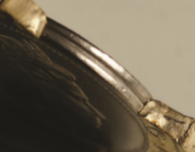
A groove is milled around the edge of the inner core so that when both parts are struck together, the metals will fuse as the outer ring deforms and spread into the groove, locking it into place.
Now that we know how £2 coins are struck, here are some of the mis-strikes and errors that can occur in the process…
The following images of variations found on £2 coins have been taken from Coin News for use in this blog.
Clipped Planchet
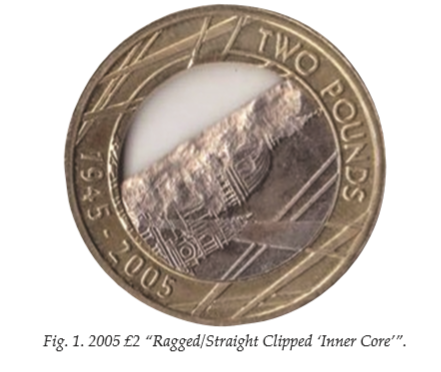
Figure 1 shows how the inner core was punched out from the end of the sheet of metal used for blanks, forming a straight or ragged edge clip.
Whilst this also occurs with monometallic coins, the pairing with an outer ring exposes a large gap which is much more noticeable.
The Royal Mint strike millions of coins each year so it is inevitable that variances will occur during the striking process and can’t always be picked up during quality control, despite the fact that this particular coin would weigh less than the standard 12g £2 coin. However, a small quantity of coins do sometimes manage to slip through the net and as i’m sure you’ll agree, they make for interesting collecting.
But before you pay over the odds for one of these coins, beware of fakers! Some coins are manipulated to look like mis-strikes or error coins and sold to unsuspecting buyers. Check the clipped planchet edge of the coin to see if it’s genuine by making sure the detail of the design fades away towards the edge rather than suddenly stopping, which would indicate the coin had been cut.
Off Centre Inner Core
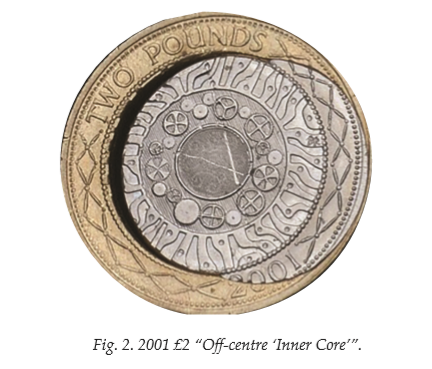
Figure 2 shows an inner core which hasn’t been united properly prior to being struck.
Due to the way the inner and outer core are struck together with the two metals being lined up and then fused together during striking, a misalignment will mean that the inner core spills into the outer ring, as seen in the image above. There might also be a gap between the two metals on the opposing join.
This mis-strike is thought to be fairly common on the bi-metallic 12 sided £1 coin as well as some of the Technology £2 coins and even foreign bimetallic coins, but have you ever spotted one in your change?
Faulty Outer Ring
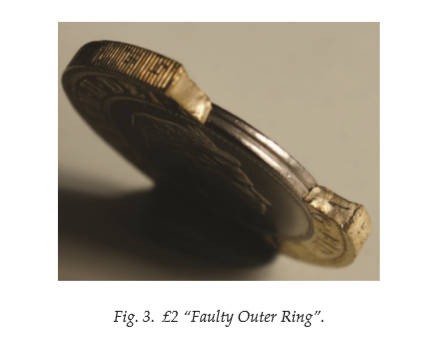
Figure 3 shows a faulty planchet or outer ring, where the inner core is exposed.
In the image above, you can actually see the specific engineering design features where the inner core is grooved to help the metal flow bond to the outer ring and fuse during striking.
Similar to the first mis-strike we looked at, this could be caused by a clipped planchet, this time created when the outer ring was punched, however coins like this may also be caused by tampering post striking, for example by fakers trying to replace the inner core of a £2 with another coin to pass off as a rare error.
The Holy Grail of Bi-metallic ‘Errors’
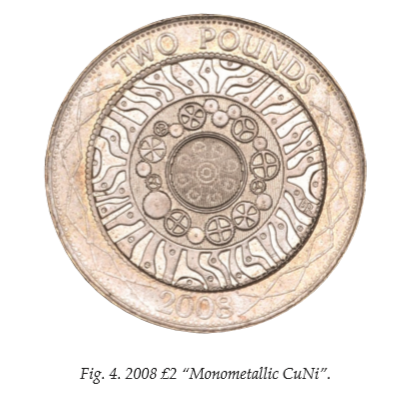
Figure 4 is described as the Holy Grail of bimetallic ‘errors’ and is the result of the nickel-brass £2 blank not having the inner core section punched out before being struck.
This means that the £2 coin is made from one full piece of nickel-brass, completely contrasting the very idea of a bimetallic coin.
A 2007 monometallic £2 was verified by The Royal Mint and in the email confirming the mis-strike it was mentioned that they had only seen 4-5 similar coins before.
This rare striking error is highly sought after and coins have achieved extraordinary prices in private sales and auctions.
Foreign Planchet
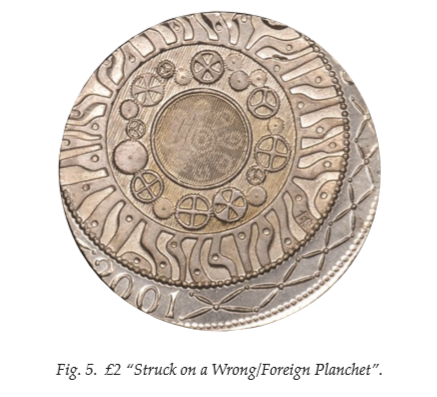
Finally, figure 5 shows a £2 design struck on the wrong planchet – a blank normally used to strike a different coin.
As The Royal Mint strikes a huge quantity of coins for different denominations and even different countries, blanks can sometimes end up in the wrong striking chamber, creating a wrong or foreign planchet error.
This is actually down to human error rather than a mis-strike and the coins would normally be picked out during quality control, however some have been spotted in circulation, not only on the £2 coin, but on various different denominations across UK coins and world wide.
One of the most famous examples in the UK is the silver 2p – a 2p coin struck on to a 10p blank which sold for 67,580 times its face value at auction.
Other £2 ‘errors’ that are worth keeping your eyes peeled for!
2014 First World War (Lord Kitchener) £2 – Two Pounds ‘Error’
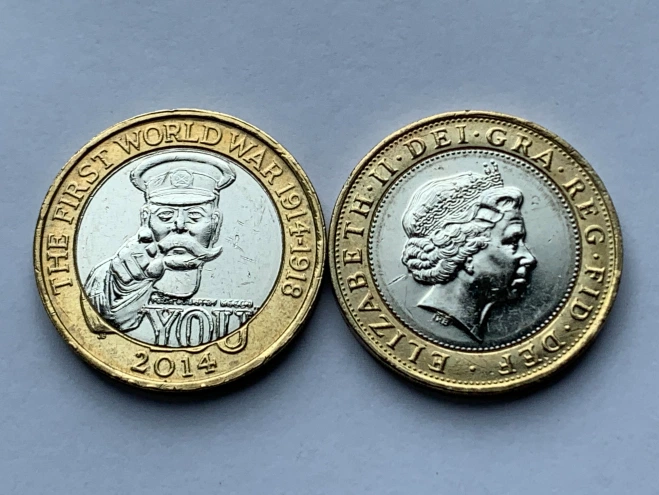
This £2 coin was issued in 2014 to mark 100 years since the outbreak of the First World War. It features an image of Lord Kitchener who was a prominent figure on British government propaganda campaigns during the time.
5,720,000 of these coins entered circulation, meaning it could be quite easy to stumble across one in your change. However, a small number of these coins are supposed to have entered circulation without the ‘Two Pounds’ denomination on the obverse.
Sometimes the denomination of the coin will feature on the reverse design, meaning it won’t appear on the obverse too. This can be seen on the Trinity House £2 coin which was issued earlier in the same year as the First World War £2.
It’s possible that the dies used to strike the obverse of the Trinity House £2 coin wasn’t replaced when the production of the First World War Centenary £2 coins began, resulting in the absence of a denomination.
We’ve only heard of two reports of these ‘error’ coins being found in circulation. However, Lockdales Auctioneers officiated the sale of the very first one back in March 2020 to the value of £500! A hefty return on a £2 coin…
Have you ever seen this £2 ‘error’? We’d love to know in the comments below.
So how much is my ‘error’ coin worth?
These mis-strikes and errors certainly make for interesting collecting and the rarer variations, such as monometallic £2 coins could certainly sell for over face value.
In fact, one such monometallic mis-strike found on a 2007 Technology £2 is estimated to be worth over £1,000!
Ultimately, as with all coins, it’s all down to how much an individual collector is willing to pay to add that coin to their collection.
If you’ve found a £2 coin with a mis-strike, it’s certainly worth having it verified and authenticated by The Royal Mint, who will supply a letter detailing their findings.
So have you found any interesting variations on your bimetallic £2 coins? Let us know in the comments below!
With thanks to Scott Wren from Coin News.
If you’re interested in coin collecting, our Change Checker web app is completely free to use and allows users to:
– Find and identify the coins in their pocket
– Collect and track the coins they have
– Swap their spare coins with other Change Checkers
Sign up today at: www.changechecker.org/app
Why you won’t find any 2017 20p coins in your change…
For those of you collecting date runs, you might have noticed that in 2017 The Royal Mint didn’t strike a single £2 or 20p coin for general circulation.
In 2016, nearly 29 million £2 coins and almost 213 million 20p coins were struck for circulation, however the next year that number dropped to 0.
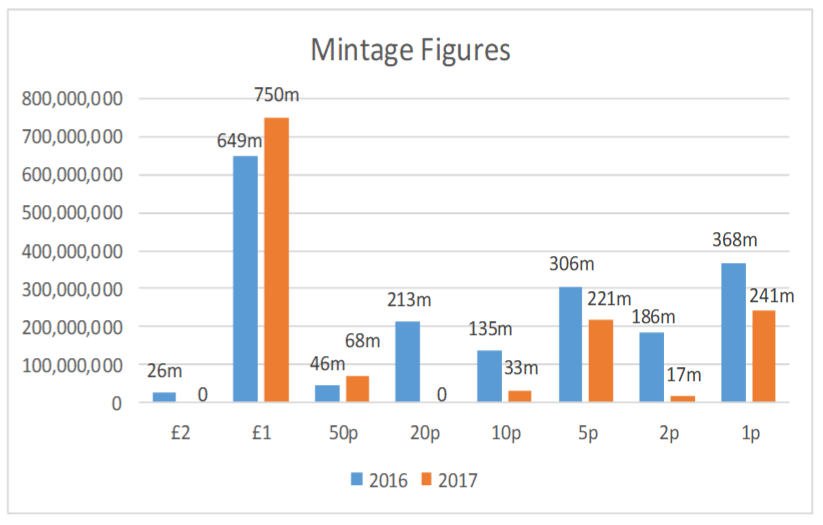
From the graph above, you’ll notice that whilst most denominations had relatively few coins struck in 2017 compared to 2016, the mintage figure for £1 coins for both years is comparatively very high.
Introduction of the new £1
It’s thought that the introduction of the new 12 sided £1 coin to replace the old round pound in 2017 affected the demand for the other coins in circulation.
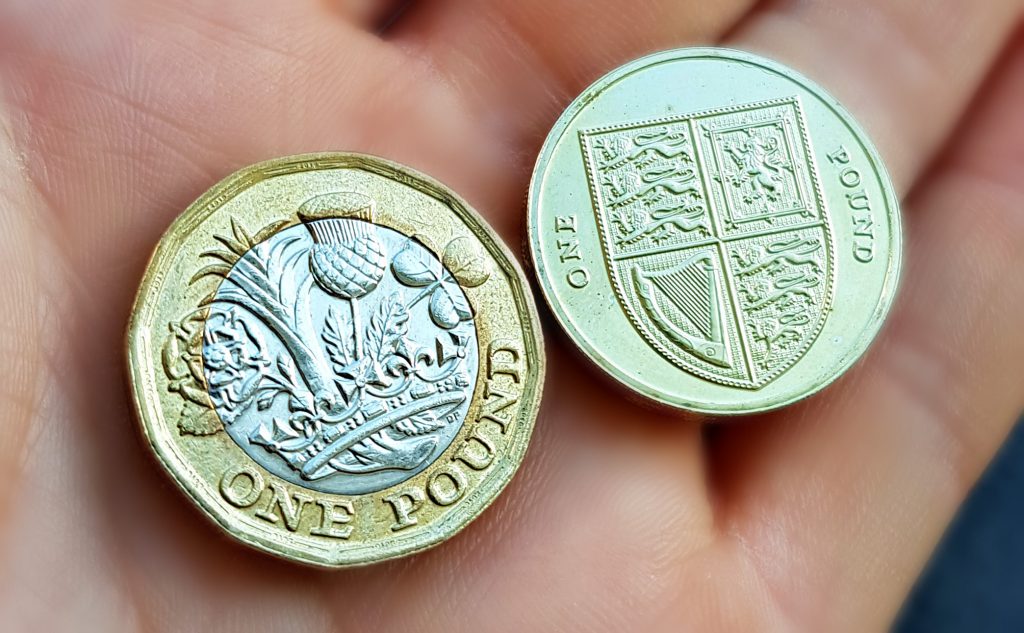
This could be down to the fact that the public were emptying their piggy banks and checking their loose change to make sure their old pound coins were used up before shops stopped accepting them. In doing so, they also ended up spending other coins in their change, meaning there was plenty of cash to re-circulate, and not as much demand for new coins to be struck for circulation.
This coupled with the growth of card payments and the decline of cash transactions, as well as the impressive 25-30 year lifespan of UK coins meant that enough £2 and 20p coins could be re-circulated in 2017 and new coins weren’t needed.
The Royal Mint had been expecting this drop in demand, as had been seen in similar cases overseas when coins were withdrawn.
Where does demand for cash come from?
The Royal Mint does not actually have any real control over how and when coins go into circulation, as this is based on demand.
HM Treasury and the large cash distribution services run by the Post Office and some banks, as well as private operators handle, sort and distribute the billions of coins in circulation, even swapping stocks between themselves.
The Royal Mint and cash distribution services regularly review the amount of coins in circulation and it’s only when they are short of a particular denomination that stocks will be called from The Royal Mint, who act as the manufacturer of the coin on behalf of the Treasury.
Surplus coins will be re-circulated before new coins are released.
Rare 50p coins from 2017
Whilst more 50p coins were struck in 2017 than 2016, two 2017 designs in particular actually have some of the lowest mintage figures of any 50p coins in circulation, excluding the Olympic 50p series.
The 2017 Royal Shield actually comes in as the second rarest 50p in circulation, closely followed by the 2017 Sir Isaac Newton 50p.
Take a look at our 50p and £2 mintage charts here.

Where can I find the 2017 £2 and 20p coins?
Whilst no £2 or 20p coins were issued for circulation in 2017, brilliant uncirculated commemorative coins were still issued, including the Jane Austen and First World War Aviation £2 coins.
These coins, along with the 2017 Britannia £2 and the 2017 20p which weren’t issued for circulation were also featured in brilliant uncirculated quality within the 2017 Annual Coin Set, which has now sold out at The Royal Mint.
This means that the only way to get hold of these coins is to purchase the set on the secondary market, with prices typically around £65, although some sets have sold for over £100.
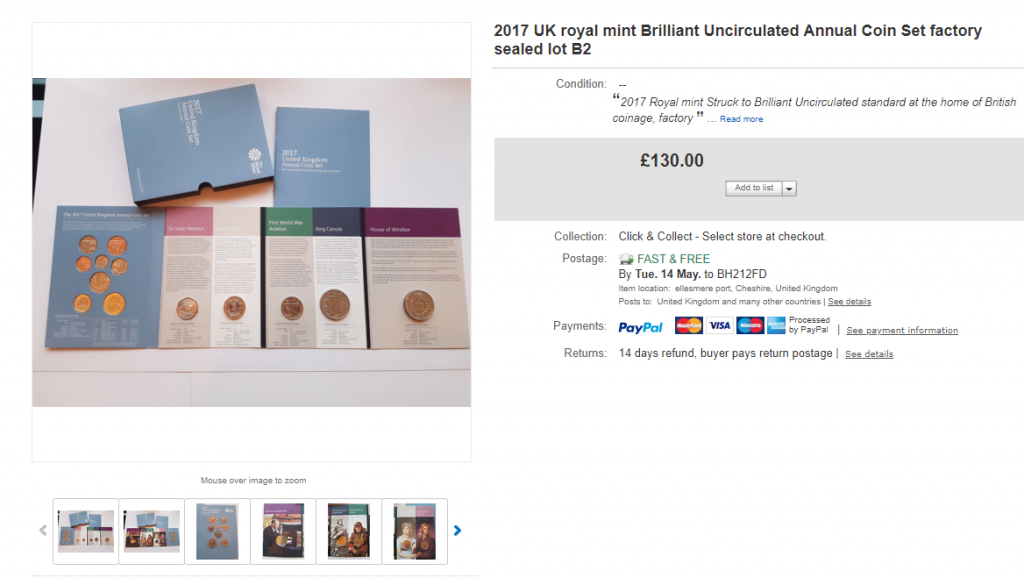
So far the 2018 £2 coins haven’t been released into circulation and whilst the 2019 Royal Shield 50p has been seen in circulation, we’re yet to hear if any of the other 2019 coins will turn up in our change.
Do you think the move towards a cashless society could be on the horizon, or are we still recovering from the surplus cash flow in 2017? Let us know in the comments below!
Secure the commemorative coins from 2017 for your collection!
Today you can own all 4 of the United Kingdom’s commemorative coins from 2017 with the Change Checker Commemorative Coin Pack, including the rare Sir Isaac Newton 50p and the Jane Austen and First World War Aviation £2 coins that can’t be found in circulation.



